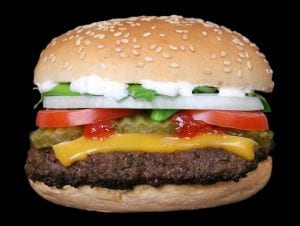Fast food no longer just an American experience
Earlier this year, McDonald’s re-released its Grand Canyon Burger for the third time. It incorporates a beef patty with  “steak filling” topped by cheddar and mozzarella cheese, crispy onions, smoked soy steak sauce, and a fried egg. These flavors are meant to evoke the spirit of our nation’s greatest natural landmark. If the burger doesn’t seem like an accurate representation of Arizona cuisine, that may be because it’s available exclusively to a market that’s 7,000 miles away from its namesake.
“steak filling” topped by cheddar and mozzarella cheese, crispy onions, smoked soy steak sauce, and a fried egg. These flavors are meant to evoke the spirit of our nation’s greatest natural landmark. If the burger doesn’t seem like an accurate representation of Arizona cuisine, that may be because it’s available exclusively to a market that’s 7,000 miles away from its namesake.
This Japanese menu item is just one example of how American fast food culture has taken shape overseas.
“Fast food is no longer just an American experience; it’s a global one,” says Ty Matejowsky, who teaches a course on anthropological perspectives in fast food at the University of Central Florida, “McDonald’s has been at the forefront of cultivating that. It’s largely divorced from its American roots.”
McDonald’s went international in 1967 after opening a location in British Columbia. The company has since expanded to 118 countries with restaurants on every continent but Antarctica.
Despite its global appeal, McDonald’s remains a scapegoat for America’s most unflattering stereotypes. The archetypal American is constantly on the go and our diet expresses that. Today, nearly 20 percent of US meals are eaten in cars. The fast food system is ideal for modern working people looking to be in-and-out of a restaurant in five minutes or less. “Americans are busy,” comments Nicole Nacamuli, events manager at Slow Food Boston, “They want something quick, they want something fast. Less families are sitting down to share a meal.”
Read the full story from Outside here.
